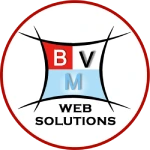The Ultimate Guide to Developing a Job Searching Portal
In today’s digital era, job searching portals have become indispensable platforms for connecting employers with job seekers. Whether it's a website or an app, a robust job board software requires meticulous planning and implementation. This blog delves into the critical aspects of building a job searching portal and highlights the essential features for creating a thriving job board platform.
1. Understand the Target Audience
A job searching portal caters to two main groups: job seekers and employers. Understanding their unique needs and expectations is the cornerstone of a successful platform.
- Job Seekers: Easy access to job listings, personalized recommendations, and tools for application tracking are crucial.
- Employers: Employers look for features like applicant management, job posting tools, and analytics.
2. User-Friendly Design and Navigation
The design of your portal should ensure a seamless experience for all users. Prioritize:
- Intuitive Navigation: Clear menu structures, filters, and search functionalities.
- Mobile Responsiveness: Ensure your platform is optimized for various devices.
- Accessible UI: Include accessibility features for users with disabilities.
3. Advanced Search and Filtering Options
Job seekers need a platform that simplifies their search process. Implement features like:
- Keyword-Based Search: Allow users to search by job title, skills, or companies.
- Filters: Include filters for location, salary range, job type (full-time, part-time, remote), and experience level.
- Saved Searches: Enable users to save their search preferences for convenience.
4. Robust Job Posting and Management Tools
For employers, streamlined job posting and management tools are vital. Include:
- Template-Based Posting: Offer pre-designed templates for quick job creation.
- Applicant Tracking System (ATS): Simplify the process of managing applications and tracking progress.
- Analytics Dashboard: Provide insights into job performance, applicant demographics, and more.
5. Personalization and Recommendations
Enhance user engagement with personalized experiences:
- AI-Driven Recommendations: Suggest jobs to seekers based on their profiles and browsing history.
- Custom Alerts: Notify users about new jobs matching their criteria.
- Profile Visibility: Allow seekers to customize their visibility to employers.
6. Integration with Social Media and Networking Tools
Social media integration can amplify your portal’s reach and functionality:
- Social Logins: Simplify sign-ups using LinkedIn, Google, or Facebook accounts.
- Sharing Features: Enable users to share job postings across social platforms.
- Networking Tools: Include features that facilitate connections between seekers and employers.
7. Secure and Efficient Payment Systems
Monetizing your portal through premium features is common. Ensure payment systems are:
- Secure: Use encrypted payment gateways.
- Flexible: Offer multiple payment options for job postings or premium memberships.
8. Content-Rich Job Board
A job portal isn’t just a listing service; it’s a resource hub. Add value with:
- Blogs and Articles: Share career advice, industry trends, and tips for job seekers.
- Webinars and Tutorials: Offer learning opportunities to improve employability.
- Company Reviews: Allow users to review and rate employers.
9. SEO and Digital Marketing
Drive traffic and visibility with effective marketing strategies:
- Search Engine Optimization (SEO): Optimize job postings for search engines.
- Content Marketing: Regularly publish high-quality content to engage users.
- Email Campaigns: Keep users informed with newsletters and job alerts.
10. Scalability and Performance Optimization
As your portal grows, it’s essential to ensure:
- Scalable Infrastructure: Choose hosting solutions that support growing traffic.
- Fast Load Times: Optimize code, images, and scripts for quicker responses.
- Cloud Integration: Use cloud services for better performance and data management.
11. Data Privacy and Security
Job portals handle sensitive data. Prioritize security with:
- GDPR Compliance: Adhere to global data protection regulations.
- Two-Factor Authentication (2FA): Enhance login security.
- Regular Audits: Perform routine security checks and updates.
12. Analytics and Reporting Tools
Data-driven decisions improve platform efficiency. Implement:
- User Analytics: Track user behavior and popular searches.
- Employer Insights: Provide data on candidate applications and job performance.
- Real-Time Reporting: Offer dashboards for actionable insights.
13. Customer Support and Feedback Mechanisms
Offer robust support to enhance user trust and satisfaction:
- Live Chat: Provide real-time assistance to users.
- Feedback System: Allow users to suggest improvements.
- FAQs and Help Sections: Include comprehensive guides and tutorials.
Conclusion
Building a successful job searching portal requires a balance of user-centric design, robust functionality, and innovative features. By focusing on the above points, you can create a platform that not only meets user expectations but also fosters long-term growth and engagement. Whether you're developing a website or an app, investing in a high-quality job board software can revolutionize the recruitment landscape and bridge the gap between talent and opportunity.
Ready to take the next step in building your job searching portal? Our web development experts specialize in creating tailor-made solutions that align with your vision. Contact us today to bring your ideas to life!







